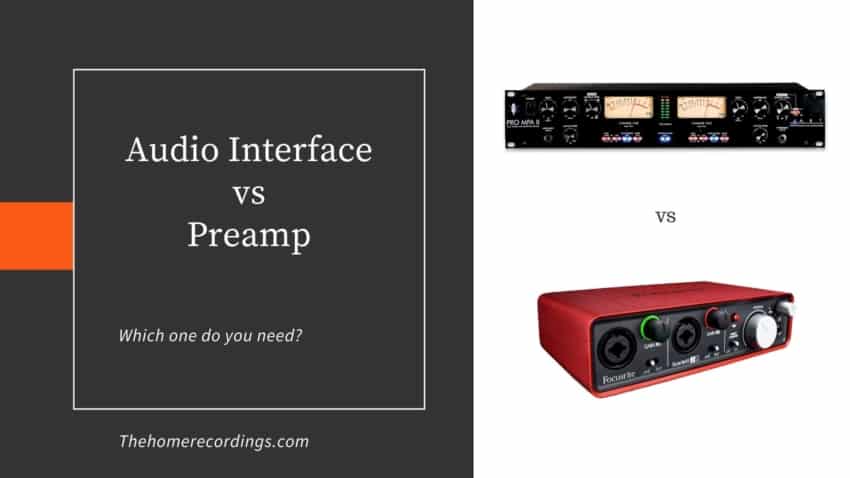

Audio interface and mic preamp professional#
This includes the preamps in professional recording consoles and rackmount or table-top preamps or channel strips. Neve’s classic 1073 preamp/EQ has been in production since 1970 Benefits of outboard preampsįor this discussion, we will consider any preamp that is not part of an interface to be an outboard preamp. * Voltage Gain in dB = 20log(output voltage/input voltage)

Microphone signals are quiet, delicate signals and mic preamps do a lot of work to increase their level up to line level, which is why mic preamps can impart so much color to the sound. That increase requires 30 to 60 dB of gain, and 60dB of gain means we are increasing the signal level by a factor of 1000*!

A microphone preamp takes this signal and boosts it up to line level, which is about 1.3 Volts. Many preamps and interfaces provide an instrument, or Hi-Z, input for this very reason.Ī microphone produces a signal that is between. Passive instruments, such as guitars, and unbalanced equipment like synths and drum machines need to be conditioned with a direct box before they go through a preamp. This increase requires somewhere between 30-60dB of preamp gain, or sometimes even a bit more. Generally, microphone signal levels are only a few millivolts, so they need a lot of gain to be brought up to line level, which is around 1 Volt. The purpose of a preamp is to amplify a microphone’s low-level output up to what we refer to as “line level.” Line level is the signal level that devices like compressors, EQs, and A-D converters want to see-often shown as “zero” on a VU meter. Mic preamps can be part of interfaces and mixers or they can be outboard rack units.
Audio interface and mic preamp how to#
Additionally, you’ll learn how to choose the ideal preamp, what a preamp does, the limitations of the preamps inside your audio interface, and the pros and cons of plugin emulations of preamps. In this article, you’ll learn why an outboard mic preamp could be a good addition to your setup. Many popular audio interfaces contain at least one mic preamp and manufacturers claim that these built-in preamps are all you need to capture perfect audio. Does your interface’s preamp give you the best sound you can get? You’ve heard of the Neve 1073, API 312, and the REDD.47 preamps and how they make your signal sound warm, thick, fuzzy, crispy, airy… These legendary preamps add measurable character to any source they process.


 0 kommentar(er)
0 kommentar(er)
